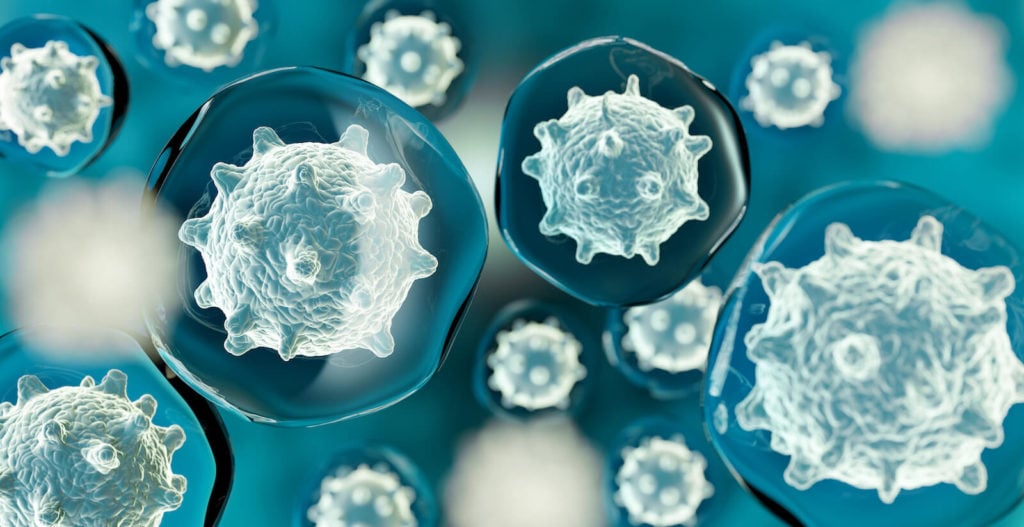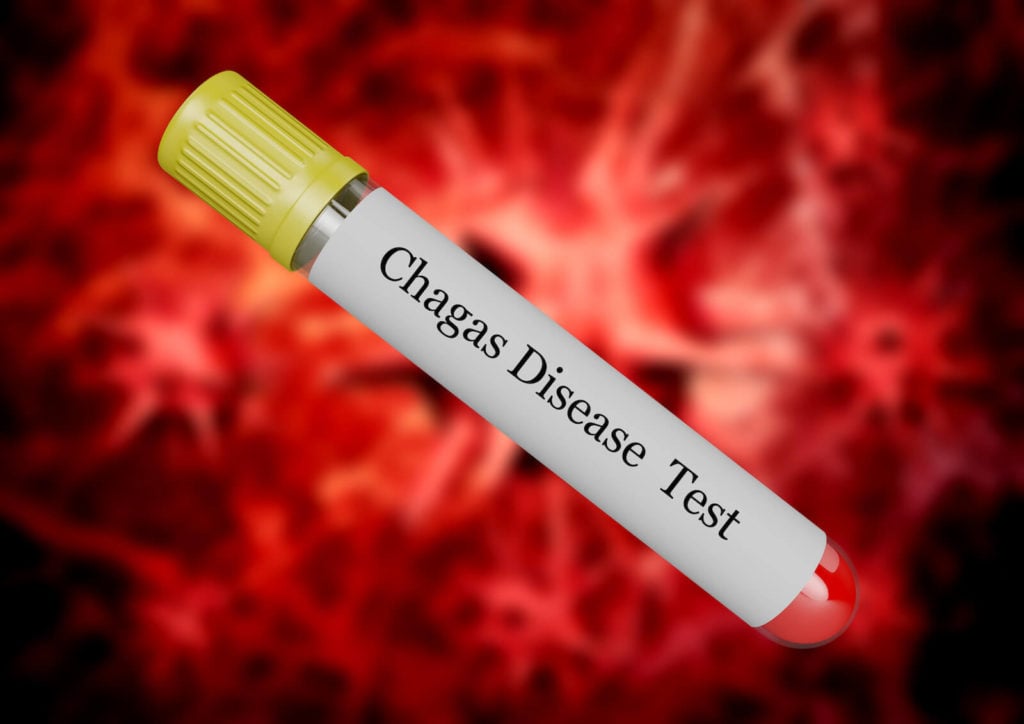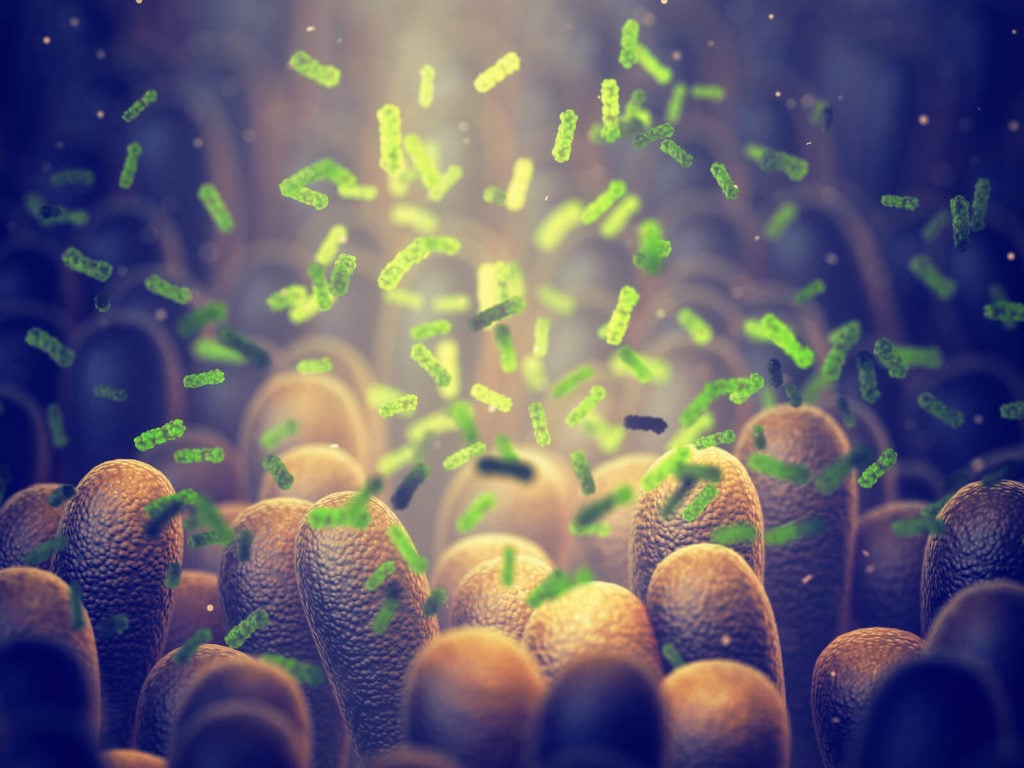Protozoan Parasites: What They Mean and How to Treat Them
- What Are Protozoan Parasites?|
- Benign Protozoan Parasites|
- Pathogenic Parasites|
- Detecting Protozoan Parasites|
- How to Treat Protozoan Parasite Infections|
Hearing that protozoan parasites such as Entamoeba coli or Chilomastix mesnili have been detected in your stool test may sound alarming, but research has shown that they don’t all cause harm. That said, if parasites are contributing to your symptoms, a few solid, effective treatment steps can help you tackle the problem and improve your overall gut health.
In this article, we’ll help you to distinguish the various types of parasites, what symptoms they may be associated with, tips for interpreting your test results, and simple solutions for treatment.

What Are Protozoan Parasites?
Protozoan parasites are single-cell organisms that have adapted to live in the tissues and cells of other organisms (like us). (Other types of protozoa are free-living; these are not considered parasites).
As part of their lifecycles, some parasitic protozoa like Giardia can live in harsh environments as hardy cysts that can even survive in cold water for months. These can be found in contaminated water, food, or in feces [1].
Not All Protozoan Parasites Are Pathogenic
Only some protozoan parasites are likely to be of concern to you, with any protozoal infections that they may bring with them. This is because not all parasites are considered pathogens (organisms that cause human diseases) [2].
Some non-pathogenic (non-harmful) protozoan parasites include:
- Chilomastix mesnili
- Endolimax nana
- Entamoeba coli
- Pentatrichomonas hominis
Other protozoan parasites can cause or contribute to symptoms. But the good news is, they can generally be eradicated by following a simple, stepwise treatment approach, with or without the help of antiparasitics.
What To Do If Protozoan Parasites Appear On Your Functional Medicine Stool Test
Functional medicine stool tests, such as the Diagnostic Solutions GI-MAP or Doctor’s Data GI-360, are popular for their thorough breakdowns of the various bacteria, fungal species, parasites, and other microbes that are living in your gut.
These tests can be helpful, when used in combination with your symptoms, history, and other factors, to help get a picture of your gut health.
But it’s important not to lose sight of that bigger picture when it comes to your gut microbiome balance and digestive health. Keep in mind, some of the protozoan parasites that may be flagged as “high” and listed in red on your stool test have actually not been shown to be harmful.
Does this mean these parasites should be ignored? No, not necessarily. If you’re experiencing symptoms, and your stool test shows signs of dysbiosis (including, but not limited to, the presence of parasites), you should take steps to restore microbial balance.
The trap that you don’t want to fall into, though, is to focus too narrowly on eradicating one specific parasite, or to jump to antiparasitic treatment without taking the foundational steps towards restoring gut health.
Bottom line? Follow a step-by-step approach to healing your gut, including getting rid of any problematic parasites, for the best results.
Common Types of Protozoan Parasites
Here are some of the most common protozoan parasites that may show up on your stool test, the symptoms they may cause, and their standard treatments.
| Name | Symptoms | Conventional Treatments |
| Cryptosporidium parvum (causes cryptosporidiosis; belongs to the taxonomic phylum Apicomplexa)-taxonomic refers to the classification of organisms. | Abdominal pain, watery diarrhea, dehydration, weight loss, fever, nausea/vomiting [3] | Nitazoxanide (Alinia), an antiparasitic drug [3] |
| Entamoeba histolytica (causes amebiasis, an infection common in tropical countries) | Only 10%-20% of people get sick, having loose stools, stomach pain, stomach cramping; in severe (or high virulence) cases, bloody stools (dysentery) and fever [4] | Metronidazole (Flagyl), tinidazole (Tindamax), ornidazole (Xynor), secnidazole (Solosec), or nitazoxanide [5] |
| Giardia lamblia/duodenalis/intestinalis (causes giardiasis, an infection found around the world) | Flatulence and watery diarrhea, dehydration, weight loss [6] | Metronidazole, tinidazole, nitazoxanide, mebendazole, albendazole, or paromomycin (if pregnant in first trimester) [6] |
| Blastocystis hominis (not conclusively determined pathogenic) | Associated with nausea, fever, urticaria (rash), vomiting, lack of appetite, diarrhea, cramping, flatulence, abdominal discomfort and pain; may be related to IBS | Metronidazole, trimethoprim/sulfamethoxazole (TMP-SMX, or Bactrim), nitazoxanide, iodoquinol, paromomycin, ketoconazole, tinidazole, Saccharomyces boulardii [7] |
| Cyclospora spp. (causes cyclosporiasis, a tropical disease; belongs to the taxonomic phylum Apicomplexa) | Watery diarrhea with frequent explosive bowel movements, appetite loss, weight loss, abdominal cramps/pain, bloating, flatulence, nausea, fatigue, vomiting, body aches, headache, fever, flu-like symptoms [8] | Trimethoprim-sulfamethoxazole (TMP-SMX) [8] |
| Dientamoeba fragilis | Diarrhea, abdominal pain, weight loss, nausea, fatigue [9] | Iodoquinol, paromomycin, metronidazole [10] |
| Plasmodium falciparum, P. malariae, P. vivax, P. ovale, P. knowlesi (malaria parasites that belongs to the taxonomic phylum Apicomplexa; P. falciparum accounts for >90 percent of malaria mortality; The World Health Organization estimated 228 million malaria cases affecting 40% of the world’s population in 2019 [11]) | Cyclical fevers (especially lasting seven or more days), headache, malaise, weakness, GI distress, upper respiratory symptoms, muscle aches; severe cases: jaundice, confusion, seizures, dark urine [12] | Depends on malaria species; chloroquine, hydroxychloroquine, primaquine, artemisinin-based combination therapy (ACT), and atovaquone-proguanil [12] |
| Leishmania (causes visceral leishmaniasis, mucosal, or cutaneous leishmaniasis; takes the form of an amastigote [cell with no motile flagella or cilia] in human cells) | Visceral: fever, enlarged spleen, abnormal blood cells (in tests) from infected liver, spleen, bone marrow, or other organs Mucosal: ulcers in the mouth, nose, and throat Cutaneous: skin lesions with asymptomatic blisters that form into ulcers that heal in 2-5 years into scars [13] | Visceral: antimony sodium stibogluconate, amphotericin, paromomycin, and oral miltefosine (depending on species) Mucosal: meglumine or stibogluconate, the WHO recommends antimonial pentavalente Cutaneous: sodium stibogluconate and meglumine antimoniate, systemic miltefosine, amphotericin B, pentamidine isethionate, paromomycin, or granulocyte macrophage colony-stimulating factor [13] |
| Toxoplasma gondii (causes toxoplasmosis) | Non-tender enlarged lymph nodes in the neck area, vague fever, chills, headache, sore throat, muscle aches, urticaria (rash), enlarged liver/spleen; severe (immunocompromised patients): fevers, seizures, headache, vision changes, altered mental status and cognition, nervous system problems, impaired balance, involuntary movements, cough, shortness of breath, eye pain [14] | Pyrimethamine, sulfadiazine plus folic acid and/or steroids, antiretroviral therapy, TMP-SMX [14] |
| Trypanosoma brucei gambiense (causes trypanosomiasis or “African” sleeping sickness; one developmental phase is the amastigote [15]) | Painless ulcer at bite site, headache, malaise, weakness, fatigue, pruritus (severe itching), joint pain, enlarged liver and spleen, weight loss, intermittent fevers, enlarged lymph nodes around the neck; eventually reversal of sleep/wake cycle, and severe mental health problems and movement, sensory, and nervous system abnormalities [16] | Pentamidine, suramin, melarsoprol, eflornithine with or without nifurtimox [17] |
| Trypanosoma cruzi (causes Chagas disease; one developmental phase is the amastigote [18]) | Fever, swelling of bite, heart or brain inflammation (rare); many remain asymptomatic for life but 20%-30% develop Chagas: abnormal heart rhythms, dilated heart that can’t pump blood well, or dilated esophagus or colon that disrupts eating and pooping [19] | Benznidazole, nifurtimox [20] |
| Trichomonas vaginalis (causes trichomoniasis, a common STD in humans) | Itching, burning, soreness of genitals; burning after urination or ejaculation; abnormal discharge; painful sex [21] | Metronidazole [22] |
Detecting Protozoan Parasites

If it is suspected that you may have come in contact with protozoan parasites, your doctor will likely recommend that you undergo some testing. The CDC (Centers for Disease Control and Prevention) recommends tests such as the following:
- Blood testing, which can detect anti-parasite antibodies or parasitic toxins. Or a smear test could be done where a microscope is used to detect parasites in the blood [23]
- Stool testing, which can identify ova (eggs) or the actual parasites in the feces [23]
- Endoscopy, in which a flexible, lighted tube and camera is inserted through the mouth down the digestive tract to view the stomach, esophagus, and small intestines [23]
- Colonoscopy, in which a tube placed through the rectum is used to examine the intestines. With this test the parasite can potentially be seen [23]
- X-Ray, MRI scan, or CAT scan, which is used to look for lesions on organs that may occur [23]
- Biopsy of lymph nodes may be used in some cases to help diagnose conditions such as toxoplasmosis
However, not all the testing has the same sensitivity. Examining a specimen under a microscope, as is done in microscopy, is not as accurate as using DNA-PCR assays. This is considered the most accurate kind of stool testing available. It can even detect just a small fragment of parasitic DNA.
This can make a big difference not only in considering whether you have a parasitic infection but also in studying the prevalence of these organisms. There is some thinking that since much testing for protozoan parasites such as Blastocystis has been done with traditional microscopy cases may have been missed, making the true prevalence higher.
A 2018 study that looked at the accuracy of different kinds of tests in detecting Blastocystis found there could be a big difference [24].
The study looked at microscopy versus in-culture and compared these to the gold standard PCR. Both microscopy and culture have lower sensitivity than PCR. Microscopy meanwhile had a sensitivity of just 36.2 percent versus culture which had a sensitivity of 67.6% [24].
Two measurements that are important with these tests are sensitivity and specificity. Sensitivity measures the accuracy of the test in finding a pathogen. Meanwhile, specificity is important in calling out false negative results and ensuring that you are free of any pathogenic agents. The sensitivity of these tests is as high as 94.7%, and the specificity reaches as high as 100%.
Keep in mind that functional medicine exams such as the GIMAP and GI360, used for stool sample testing, should likely have similar accuracy. However, since these have only recently been on the market, rates with these haven’t been sufficiently studied.
How to Treat Protozoan Infections
A holistic, stepwise approach works best when it comes to protozoan parasites and overall gut health.
You can take these steps to not only treat parasitic infections but improve the overall health and balance of your gut:
- Set a strong foundation. This usually involves first making sure that you are getting enough rest and exercising regularly, and eating an anti-inflammatory diet that meets your needs.
- Add probiotics to the equation. Not only do probiotics help to balance your gut microbiome, reduce inflammation, and improve your digestive health, as the research has shown, some probiotics like S. boulardii can offer potent efficacy in eradicating protozoan parasites.
- Include antimicrobials if needed. If your symptoms persist, consider the use of herbal or prescription antimicrobials to help clear out any pathogenic microorganisms including parasites.
While anti-protozoan medication can be powerful and helpful for parasitic diseases, it can also come with a large number of potential side effects. Particularly when dealing with less virulent parasites, these can often be kept at bay by a nutrient-dense anti-inflammatory diet and the use of probiotics, as well as lifestyle practices that bolster the immune system and help to fight microbes and any resulting infectious diseases.
Your susceptibility in the first place may be linked to your own risk factors and may even include things such as whether you have enough stomach acid. Stomach acid helps to kill unwanted bacteria, parasites, and other microbes that might be found in your food. If you have low stomach acid, therefore, you may end up with an increased risk of parasitic infections.
Probiotics Can Eradicate Parasites

Probiotics have been shown to help combat intestinal parasites. These may either work on their own or may work to enhance the effect of conventional anti-parasitic drug treatment.
Take the probiotic Saccharomyces boulardii (S. boulardii) and what this can offer. Research has shown that when it comes to treating Giardia infections, this can actually be more effective than standard anti-parasitic drug treatments alone [25].
Research shows that those treated with the combination of S. boulardii and metronidazole for Giardia lamblia infections did better than those with the standard metronidazole alone. After two weeks of treatment, all of those who received the S. boulardii probiotic, as well as the metronidazole were free of infection. But those who received the medication alone still had parasite cysts detected in 17.1% of cases. This was also true after four weeks of treatment [25].
- Probiotic + antibiotic = 100% clearance
- Antibiotic alone = 83% clearance
Likewise, this S. boulardii probiotic also proved as effective as the metronidazole in treating 48 children with B. hominis infections. In this study, the children were treated with S. Boulardii alone, metronidazole, or no treatment at first followed by use of metronidazole if they still had B. hominis [26].
The research showed that after 10 days,
- 77% of those treated with the S. boulardii saw their symptoms improve.
- This was also true for 67% of those receiving the metronidazole who had their symptoms improve.
- Meanwhile, symptoms were resolved in 40% of those who received no treatment at first followed by the metronidazole [26].
Herbal Antimicrobials
A variety of herbal antimicrobials are also great treatment options for protozoan parasites. Some of these promising anti-parasitic herbs include:
- Peppermint oil which, in addition to having a pain-relieving effect, also serves as an antifungal, antimicrobial, and antiparasitic agent, as determined by in vitro studies, as well as having anticancer properties [27].
- Artemisinin is an antimalarial agent that has been shown to have powerful anti-parasitic properties. In addition to having some effect on Toxoplasma gondii and Plasmodium chabaudi, which have developed some resistance to this [28, 29], artemisinin has been shown to be a potent antiprotozoal agent [30, 31, 32]. This might also provide a boost to the anti-malarial medication sulfadoxine-pyrimethamine, allowing for faster parasite clearance than with traditional medication alone [32].
- Oregano oil has been known to eliminate parasites. A study of 14 patients with fatigue and chronic GI complaints found that this eliminated parasites in these patients who were exhibiting chronic GI complaints. By six weeks, the oregano oil had eliminated the parasites in all but one of the individuals and improved GI symptoms in seven out of 11 patients with blastocystis hominis [33].
Consider Your Overall Gut Health When It Comes to Protozoan Parasites
Anyone can encounter protozoan parasites at some point in their lives, whether you’re traveling to exotic locales or remaining close to home. In some cases, these may not even cause you any problems. If so, keep in mind that just because something has been detected does not necessarily mean that it’s something you should be concerned about.
The important thing if you find yourself faced with a pathogenic parasite is to understand that this can be totally manageable if you take the right steps. Within weeks, with the right approach, you should hopefully find that anything that is truly detrimental has been handled and is no longer in your system.
You can take the needed steps on your own, or if you’d prefer a consultation, just let us know and we will guide you through this process. You can also find further information that will help you understand more on this in my book, Healthy Gut, Healthy You.
Dr. Michael Ruscio is a DC, natural health provider, researcher, and clinician. He serves as an Adjunct Professor at the University of Bridgeport and has published numerous papers in scientific journals as well as the book Healthy Gut, Healthy You. He also founded the Ruscio Institute of Functional Health, where he helps patients with a wide range of GI conditions and serves as the Head of Research.➕ References
- Mendez TL, De Chatterjee A, Duarte TT, Gazos-Lopes F, Robles-Martinez L, Roy D, et al. Glucosylceramide transferase activity is critical for encystation and viable cyst production by an intestinal protozoan, Giardia lamblia. J Biol Chem. 2013 Jun 7;288(23):16747–60. DOI: 10.1074/jbc.M112.438416. PMID: 23589290. PMCID: PMC3675608.
- CDC – Parasites – About Parasites [Internet]. Available from: https://www.cdc.gov/parasites/about.html
- Cryptosporidiosis | Genetic and Rare Diseases Information Center (GARD) – an NCATS Program [Internet]. Available from: https://rarediseases.info.nih.gov/diseases/6219/cryptosporidiosis
- General Information | Amebiasis | Parasites | CDC [Internet]. Available from: https://www.cdc.gov/parasites/amebiasis/general-info.html
- Intestinal Entamoeba histolytica amebiasis – UpToDate [Internet]. Available from: https://www.uptodate.com/contents/intestinal-entamoeba-histolytica-amebiasis
- Dunn N, Juergens AL. Giardiasis. In: StatPearls. Treasure Island (FL): StatPearls Publishing; 2021. PMID: 30020611.
- Sekar U, Shanthi M. Blastocystis: Consensus of treatment and controversies. Trop Parasitol. 2013 Jan;3(1):35–9. DOI: 10.4103/2229-5070.113901. PMID: 23961439. PMCID: PMC3745668.
- CDC – Cyclosporiasis – General Information – Cyclosporiasis FAQs [Internet]. Available from: https://www.cdc.gov/parasites/cyclosporiasis/gen_info/faqs.html
- CDC – Dientamoeba fragilis – Frequently Asked Questions (FAQs) [Internet]. [cited 2021 Sep 23]. Available from: https://www.cdc.gov/parasites/dientamoeba/faqs.html
- CDC – Dientamoeba fragilis – Resources for Health Professionals [Internet]. [cited 2021 Sep 23]. Available from: https://www.cdc.gov/parasites/dientamoeba/health_professionals/index.html
- Zekar L, Sharman T. Plasmodium Falciparum Malaria. In: StatPearls. Treasure Island (FL): StatPearls Publishing; 2021. PMID: 32310422.
- Buck E, Finnigan NA. Malaria. In: StatPearls. Treasure Island (FL): StatPearls Publishing; 2021. PMID: 31869175.
- Maxfield L, Crane JS. Leishmaniasis. In: StatPearls. Treasure Island (FL): StatPearls Publishing; 2021. PMID: 30285351.
- Madireddy S, Rivas Chacon ED, Mangat R. Toxoplasmosis. In: StatPearls. Treasure Island (FL): StatPearls Publishing; 2021. PMID: 33085433.
- CDC – African Trypanosomiasis – General Information – East African Trypanosomiasis FAQs [Internet]. Available from: https://www.cdc.gov/parasites/sleepingsickness/gen_info/faqs.html
- CDC – African Trypanosomiasis – Disease [Internet]. Available from: https://www.cdc.gov/parasites/sleepingsickness/disease.html
- CDC – African Trypanosomiasis – Treatment [Internet]. Available from: https://www.cdc.gov/parasites/sleepingsickness/treatment.html
- CDC – Chagas Disease – Biology [Internet]. Available from: https://www.cdc.gov/
- CDC – Chagas Disease – Disease [Internet]. Available from: https://www.cdc.gov/
- Edwards MS, Stimpert KK, Bialek SR, Montgomery SP. Evaluation and management of congenital chagas disease in the united states. J Pediatric Infect Dis Soc. 2019 Nov 6;8(5):461–9. DOI: 10.1093/jpids/piz018. PMID: 31016324.
- STD Facts – Trichomoniasis [Internet]. Available from: https://www.cdc.gov/std/trichomonas/stdfact-trichomoniasis.htm
- Trichomoniasis – STI Treatment Guidelines [Internet]. Available from: https://www.cdc.gov/std/treatment-guidelines/trichomoniasis.htm
- CDC – Parasites – Resources – Diagnosis [Internet]. Available from: https://www.cdc.gov/parasites/references_resources/diagnosis.html
- Padukone S, Mandal J, Rajkumari N, Bhat BV, Swaminathan RP, Parija SC. Detection of Blastocystis in clinical stool specimens using three different methods and morphological examination in Jones’ medium. Trop Parasitol. 2018 Jun;8(1):33–40. DOI: 10.4103/tp.TP_4_18. PMID: 29930905. PMCID: PMC5991034.
- Besirbellioglu BA, Ulcay A, Can M, Erdem H, Tanyuksel M, Avci IY, et al. Saccharomyces boulardii and infection due to Giardia lamblia. Scand J Infect Dis. 2006;38(6–7):479–81. DOI: 10.1080/00365540600561769. PMID: 16798698.
- Dinleyici EC, Eren M, Dogan N, Reyhanioglu S, Yargic ZA, Vandenplas Y. Clinical efficacy of Saccharomyces boulardii or metronidazole in symptomatic children with Blastocystis hominis infection. Parasitol Res. 2011 Mar;108(3):541–5. DOI: 10.1007/s00436-010-2095-4. PMID: 20922415.
- Keifer D, Ulbricht C, Abrams TR, Basch E, Giese N, Giles M, et al. Peppermint (Mentha piperita): an evidence-based systematic review by the Natural Standard Research Collaboration. J Herb Pharmacother. 2007;7(2):91–143. DOI: 10.1300/j157v07n02_07. PMID: 18285310.
- Nagamune K, Moreno SNJ, Sibley LD. Artemisinin-resistant mutants of Toxoplasma gondii have altered calcium homeostasis. Antimicrob Agents Chemother. 2007 Nov;51(11):3816–23. DOI: 10.1128/AAC.00582-07. PMID: 17698618. PMCID: PMC2151471.
- Juteau F, Jerkovic I, Masotti V, Milos M, Mastelic J, Bessière J-M, et al. Composition and antimicrobial activity of the essential oil of Artemisia absinthium from Croatia and France. Planta Med. 2003 Feb;69(2):158–61. DOI: 10.1055/s-2003-37714. PMID: 12624823.
- Blanke CH, Naisabha GB, Balema MB, Mbaruku GM, Heide L, Müller MS. Herba Artemisiae annuae tea preparation compared to sulfadoxine-pyrimethamine in the treatment of uncomplicated falciparum malaria in adults: a randomized double-blind clinical trial. Trop Doct. 2008 Apr;38(2):113–6. DOI: 10.1258/td.2007.060184. PMID: 18453510.
- Mueller MS, Runyambo N, Wagner I, Borrmann S, Dietz K, Heide L. Randomized controlled trial of a traditional preparation of Artemisia annua L. (Annual Wormwood) in the treatment of malaria. Trans R Soc Trop Med Hyg. 2004 May;98(5):318–21. DOI: 10.1016/j.trstmh.2003.09.001. PMID: 15109558.
- Priotto G, Kabakyenga J, Pinoges L, Ruiz A, Eriksson T, Coussement F, et al. Artesunate and sulfadoxine-pyrimethamine combinations for the treatment of uncomplicated Plasmodium falciparum malaria in Uganda: a randomized, double-blind, placebo-controlled trial. Trans R Soc Trop Med Hyg. 2003 Jun;97(3):325–30. PMID: 15228253.
- Force M, Sparks WS, Ronzio RA. Inhibition of enteric parasites by emulsified oil of oregano in vivo. Phytother Res. 2000 May;14(3):213–4. DOI: 10.1002/(sici)1099-1573(200005)14:3<213::aid-ptr583>3.0.co;2-u. PMID: 10815019.

Discussion
I care about answering your questions and sharing my knowledge with you. Leave a comment or connect with me on social media asking any health question you may have and I just might incorporate it into our next listener questions podcast episode just for you!